


In the digital era, undoubtedly, texting printing applications offer significant potentials for growth. With more web to print services coming into the scene, stakeholders seek to invest in digital textile printing capability. These open a room full of opportunities for brands to diversify their offering and take their first steps into the world of textile print. If this seems an overwhelming task, the web to print services help brands explore new business possibilities. The tool enables brands to let their apparel, footwear, headgear speak volumes of their brand value and increase their market reach. The software allows ecommerce fashion brands to integrate platforms offering the easiest use of the standard printing solutions, which helps print businesses simplify and automate orders and reordering for their retail, corporate, and reseller clients. The tool comes with exclusive features enabling the robust B2B strategy for businesses to highlight their key products, services, and promotional offers to engage customers, generate new and repeat sales, increase productivity, and expand their print business.
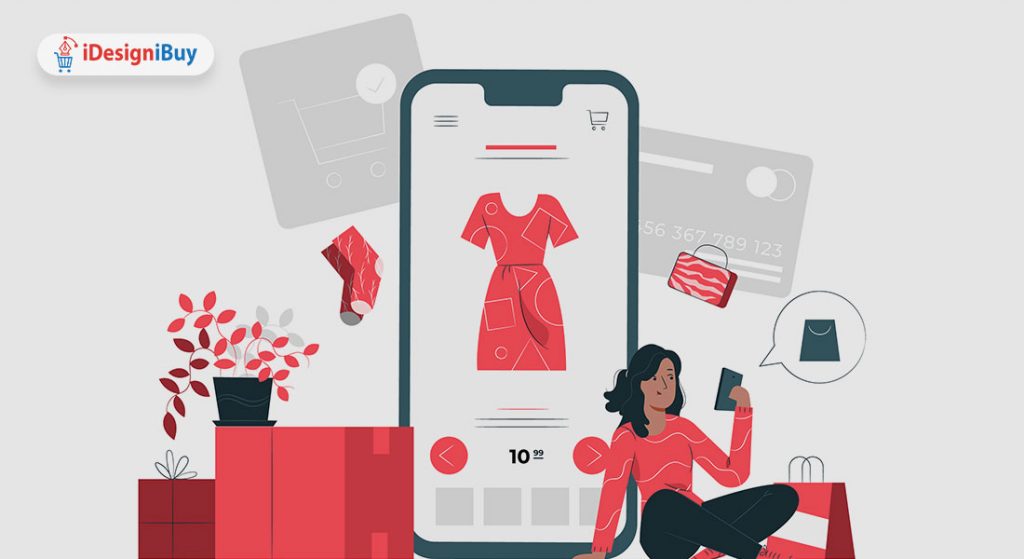
Web to Print Services Enables Fashion Brands to Smoothly Transit into Digital Economy
In recent times, the printing industry witnessed a boom in its usage, thanks to the latest advancements. The growth also brings in a huge opportunity for screen printing, as it is still highly used as a decoration technique for specific items, such as t-shirts. Besides, the sector also provides direct-to-garment (DTG), which has so much to offer. The brands rely on using digital inkjet technology to print onto the garments directly. It serves as one of the biggest commercials that brands are willing to capitalize on, including personalization and customized production. With garments accounting for most of the output in textile, digital technology is key to unlocking creative decoration with bespoke projects, especially when compared to traditional screen printing.
The new-age technology enables companies to be unique and allow their customers to personalize their product to a point where they can even choose a fabric and tell the manufacturers precisely they want it to be manufactured. Custom manufacture allows companies to produce larger quantities of products, but the designs can be tailored to produce a bespoke product. Not only does the end customer get a custom product, but they also get it at a lower cost.
Likewise,web to print online designer is a solution that allows brands to let their customer’s customer can customize various products as canvas and photo printing. Buyers can customize a product and purchase it in the most seamless possible way. They can select the style, wrap style, upload their photo, and checkout shipping.
By far, we have emphasized enough the modern technologies reshape the printing industry. Let us now explore a little more to know why brands are moving to the new sphere and how it will benefit them in the future.
Here are reasons why shifting to digital printing technology is good for the fashion industry:
Fashion is changing at its core. Buyers have moved into a different zone in their life where they don’t have to get up and physically do anything. And the same goes for shopping. People who would attend fashion shows and then meet up with the designers to design their clothes have been cut off. Since the last year, international travelling is banned, so buyers can’t come and shop. Besides, showcasing designs on shows and catwalks is impossible. This transformation in lifestyles compelled brands to look for more suited options to audiences waiting for the latest collections.
Moreover, the demand for luxury (paywall) and retail buyers are understandably looking for different things. This indicates that brands have to think beyond ecommerce to save money on operational costs and be nimbler. Many leading fashion houses, such as Versace and Ferragamo, provided virtual showrooms to their buyers with the help of their digital technology partners. It’s important to remember that neither virtual showrooms nor digital sampling are a new technology. They simply repackage existing technology for a different purpose.
According to Steven Kolb, Chief Executive of CFDA, 95 per cent of the fashion designers presenting their collections during the fashion shows are now planning to move exclusively online. The CFDA has launched an online portal, Runway 360, for these brands. Through this online platform, designers can flaunt their designers using content, including videos, live streaming, shopping features, and many other elements. This indicates that digital is the only way forward, and luxury fashion brands must look for something that helps them look beyond ecommerce. Investing in the digital technology that can bolster their supply and distribution chains. This will also allow brands to integrate data from buyers and data from customers, giving them a 360-degree view of their business and possibly impacting future design decisions.
It is high time brands realize that technology is here to help, streamline, and scale up their business. It won’t become an alternative. Similarly, installing digital solutions in the physical stores will help brands meet customers’ dynamic needs and take the customer experience to the next level. Yes, it is understandable that the feeling to touch a cloth or embroidery is irreplaceable and can’t be created using technology. Therefore, you have ample time to implement and comply with the latest technology that allows buyers to shop in-store yet use digital technology to create something unique and special. The fashion industry needs to approach digital transformation knowing that certain non-negotiables cannot be surpassed, no matter how great the investment.
For fashion brands to find success in digital transformation and they must set their expectations from the start. Although we have accepted the pandemic and are coping, there are still barriers for the industry given the travel bans that continue to be in place. And technology is here to help fashion brands to bridge this gap. The innovative technologies are the one-stop solution and exercise that can forever change the business course. In fact, millennials show the necessary interest in merging technology with fashion. As per American Express reports, 48 per cent want brands to customize offers these days to suit their needs. That refers to everything from pricing to messaging, but the product is becoming an ever-present part.
Conclusion-
The fashion industry is undergoing radical transformations. It is changing its course 360 degrees from analogue to digital. And the recent COVID-19 outbreak only accelerated the process of moving online and adopting digital technology. It not only helps them to deal with the relentless rise in global temperatures, triggering climate change and increasing pressure on the industry to become more sustainable. The web to print services by iDesigniBuy enable brands to transit your offline business into the online marketplace seamlessly. It empowers brands to deal with the challenges in the trade by accommodating the new demands of modern time, reducing waste and lead times, and streamlining physical production post-lockdown.
If you are willing to adapt and reinvent your brand,

Since the beginning of this decade, we have only worn and seen people in sweatpants and matching facemasks. Yes, athleisure and a cloth face cover have been the top priority among many people, but an essential accessory missing from most people’s wardrobes has been best designer handbags. Taking the notion a little further is handbag design software, a customization solution that allows customers to design their bags in the way they like it and flaunt it to the world. The custom-made solution enables your buyers to add accessories to their wardrobe that people couldn’t stop talking about. On top of it, its digital solution enables customers to seamlessly design and preview the customized bag in 3d and then head for final payment.
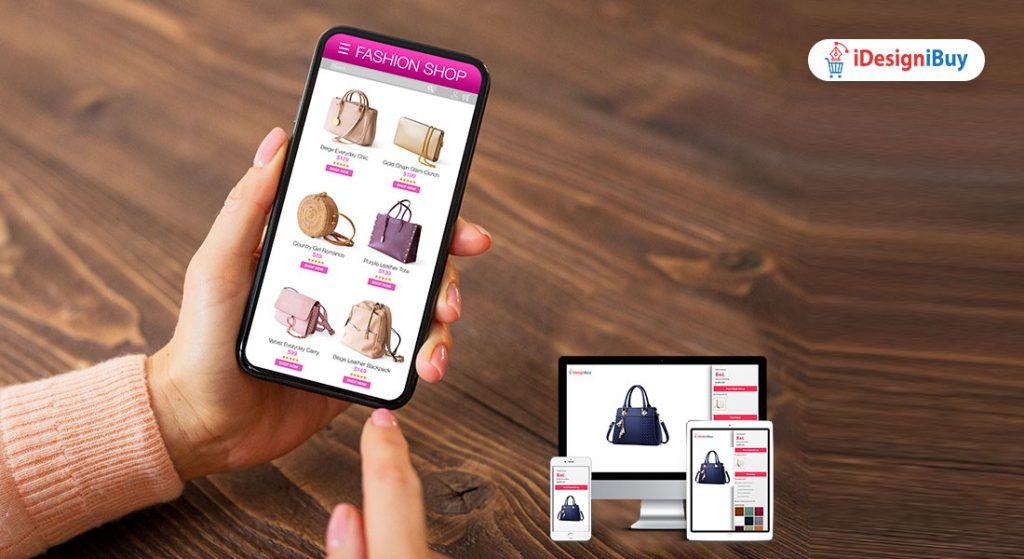
Bags Design Software Offers Solutions to Thrive in the Dynamic Online Marketplace
Bags have become an integral part of our wardrobes and are used to convey the mood, comfort, and style of the person carrying them. For a long time, the luxury industry for being too trend-setter and damaging the environment. Consequently, brands had to listen to buyers and crucial stakeholders to listen and understand the ways that could help them to revamp their business model and at the same time take their business to new heights. As usual, technology has all the answers that one is looking for, and this time, it has come up with digital solutions and resale strategies. And with rising interest and awareness among customers, brands are on the verge of exploring some untapped opportunities that will prove profitable in the days to come. And one such solution is a secondhand market or resale market.
According to the reports published, it has been found that the luxury secondhand market is growing four times faster than the primary luxury market, at 12 per cent per year versus 3 per cent. Luxury resale already represents a $24 billion market today. The rise in sales could be attributed to the emergence of digital technology in the luxury industry and the surging need to control the overuse of leather and overproduction.
In the past seven months, leading luxury resellers have reportedly witnessed an increase in sales with the most expensive and best designer handbags, such as the Hermes Kelly Bag, the Louis Vuitton Eva bag, and the Chanel Double Flap Bag. The sales came as a surprise for many as they hadn’t anticipated that wearing nice clothes with trendy bags would be such a hit in the corona period. Additionally, when the industry was facing some of the unprecedented crises across the global economies continue to witness downturns, luxury purses are not on the top list of spending priorities. But the data tell a different story.
Moreover, as resellers scale up, they compete more directly with fast fashion than with the luxury brands themselves. Resellers are laser-focused on scaling, and they’re currently looking to do so through new investments in technology that enable algorithmic curation and AI-powered authentication. However, there are exceptions in the industry, as some brands, such as Kering, took a 5 per cent minority stake in the French luxury resale platform Vestiaire Collective at the beginning of March this year. Many have their eyes to this shift in business strategy, as it is considered the strongest and most sought-after joining forces between the worlds of luxury brands and resale. Luxury brands are beginning to see resellers as allies instead of enemies.
Blending two different worlds may seem overwhelming; however, we have a panacea that goes by the name bag design online. It is a customization solution that brings together the best of both worlds, that is, through the tool, your buyers can design any bag they like from your e-catalogue, and you only have to manufacture what has been asked from you. The custom-made solution empowers brands to cater to the dynamic needs of customers and reduce the burden on the planet through its digital technology as it prevents customers from throwing away the product and increasing the landfill.
Let us look at the various factors and success stories of the various luxury brands and take inspiration from them to excel in the fashion industry:
Digital technology has become an integral part of our lives, and many emerging brands are capitalizing on the latest trends. One example to support the notion is Rebag, whose app can be downloaded from any app store, allowing buyers to take a snap of the bag they like and think of selling their bags with the camera phone. The Clair AI produces a handful of search results, and customers can choose a match, and the tool generates a price. Additionally, the recent events have accelerated the use of more app-based brands and drove the resale trend. As a result, the brand observed revenue growth in the last year.
This all seems to be the tip of the iceberg, and with each passing day, the more advanced technology will puh the online and digital economy and resale could get bigger than what you see right now. The new-age technology will help buyers to view the world beyond their closet and see what others have bought and are up to in the fashion world. The virtual representations of the bags enable buyers to snap photos of the bags on the show. Clair AI could turn Fendi baguettes into It bags all over again, only this time around, they’d be second-, third-, or even fourth-hand.
These days practically everyone is addicted to vintage and resale sites, spending untold hours both looking for things to love and consigning things that, despite their exquisite provenances, they don’t want anymore. The group especially propelling the growth of resales is millennials. There might be a good reason for all of this. As the pandemic upended our lives, the supply chains throughout the apparel industry took a massive hit. Some halted production to make PPE, and others pulled seasons off the production line entirely. At the same time, demand for those bags went up as some millennials, who were previously travelling three times per year on average, according to AARP, couldn’t spend money on experiences and instead turned their eye toward a new type of luxury.
Traditionally, millennials have been more sustainability-minded than the generations before. On top of that, most consumer studies show that the millennials, along withGeneration Z, have been the greatest contributors to growth in the luxury market because they value quality. Resale not only offers a more affordable baseline with easy financing options through third-party platforms like Afterpay and Affirm, but it also encourages buyers to engage in both the buying and selling process.
Make an Informed Decisions-
To sum up the blog, it would be appropriate to assume that anyone interested in buying best designer handbags for resale bags. And as luxury resale continues to rise courtesy of digital technology and better financing options for buyers who don’t wish to spend the money upfront. Likewise, the handbag customization software by iDesigniBuy enables brands to bring the best of both worlds, that is, ensure customers get what they are looking for and are not surprised by the prices. The best designer handbags tool allows your buyers to get a complete view of the product they are buying and can also check the product’s price as they customize it. The digital feature in the tool ensures brands establish transparency with their customers and no bags are wasted.
Allow us to help you!

Jewelry has been the biggest status symbol for people since time immemorial. It denotes wealth, beauty, love, and in some cases, family legacy. Read More

The footwear industry is becoming bigger than ever, and the current trends in the sector show no indications of slowing down. However, as shoppers become more aware of brands’ responses towards nature, shoe manufacturer is forced to initiate measures to resolve it.Read More

Customization is the king in helping brands to stand out. And the recent events around the world have forced people to adjust and adapt to the new social parameters. Consequently, it impacted consumers’ expectations for shopping experiences. With the vaccination drive reaching a new level, the world is anticipated to have reached the last phase of the pandemic, which would evolve customer expectations. Fashion brands will have to adopt strategies that will keep their businesses run no matter what comes in the way, with the help of most famous product designers and customization seems to be the only viable option to attain the target. Likewise, the product configurator software enables apparel and accessories companies to let their buyers design and shop a broad range of fashionable items, including dresses, shirts, skirts, pants, t-shirts, jewelry, shoes, bags, mugs, and caps, among many other things.
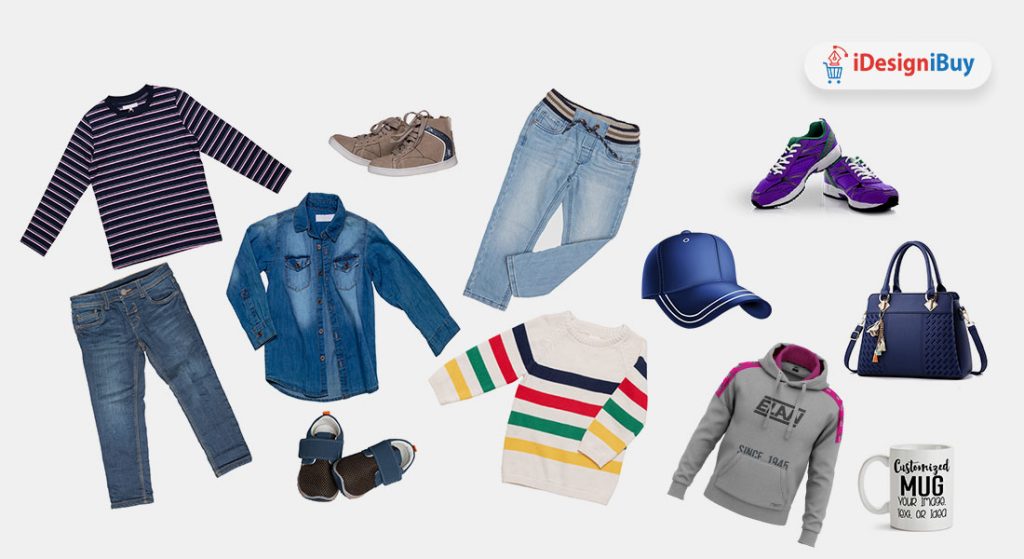
Most Famous Product Designers Enables Brands to Cater to Dynamic Customer Needs
We live in the digital age where people are well-versed with technology, thus becoming imperative for fashion brands to align themselves with the growing need for modern solutions to enhance the shopping experience. Buyers’ journey has radically shifted online as each year passes by; however, the recent COVID-19 restrictions across the globe accelerated the need to offer modern solutions and services. In fact, according to 2021 State of Marketing to Engineers report, technical buyers complete more than half of the buying process online before they engage with a company directly.
As we return to our new normal, fashion brands meet up with their consumers online and add value through content and personalized experiences. This can be particularly useful when considered against the backdrop of the digital transformation movement where companies are implementing new technologies like artificial intelligence (AI), Internet of Things (IoT), and sophisticated data analytics to optimize production. Let us illustrates various factors that help brands meet and exceed customers’ expectations.
Below are the elements that will govern the future trends of consumer behavior:
Ecommerce had been gaining a lot of attention from the buyers even before the pandemic outbroke; however, once the citizens were put under lockdown, the online marketplace rose meteorically. Therefore, it shouldn’t come as news to the fashion brands when over two billion people across the globe chose to shop online in 2020, exploding in e-commerce demand. Customers that have been exposed to digital touchpoints now saw the emergence of an opportunity to demand a highly curated experience provided. And when the lives are adjusting back to normal, the buyers ask for rich online shopping experiences that could also be implemented on the physical stores.
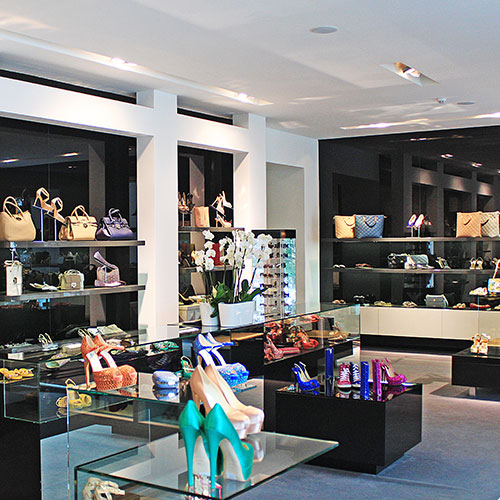
Likewise, the 3D product configurator can be installed on the brands’ website as well as on their brick-and-mortar stores that enable their buyers to design their fashion products from anywhere and anytime. The customization solution comes with digital features that help brands to gain a competitive edge and enhance the shopping behavior that ensures more conversion and a lesser bounce rate. It offers advanced solutions to brands that lead to adjusting their planograms and store layouts to provide a customized experience for every customer, similar to online shopping. For instance, a buyer could come to the website to design a pair of jeans that they have stored in their cart, but they are unsure whether the outfit would suit them or not; hence they may rely on the 3d technology that helps them to scan their body and make the minute changes on the cloth. They can also look at the various designs from your e-catalogue that aids them to pair several pieces together.
In the past year, we all have learned the lesson of keeping our surroundings neat, clean, and healthy. And most governments have formed policies that compel fashion brands to maintain cleanliness within the places, such as trial toom, retail stores, and supply chain nodes. These orders are especially handy when it comes to social distancing, masking up, and maintaining hygiene. The fashion industry can implement the self-checkout kiosks to the plastic barrier that restricts direct communication between employers and customers. Minimizing people in-take in the store is also crucial for brands’ stores or even at the warehouse, as it is significant to maintain their health and wellness. Moreover, this behavior would continue and became a permanent fixture even after the pandemic has passed. Fashion houses need to implement strategies in wellness and safety, such as ultraviolet (UV) lighting and bipolar ionization disinfection, which will shine through customer satisfaction, reviews and repeat visits.
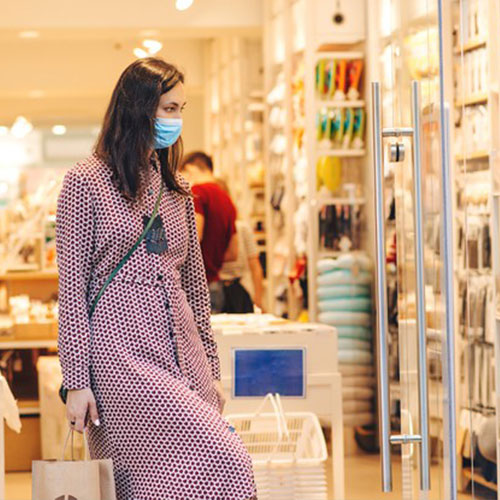
Furthermore, businesses leverage advanced technology by investing in the latest clean air solutions and help their associates maintain a heightened degree of health and safety. By analyzing employee performance data, most famous product designers develop cross-utilization digital training programs to ensure all associates are up to date on the latest safety protocols and customer loyalty bounce-back analysis.
Closing Comments-
The pandemic has changed the way consumers approach their brands and their experiences and expectations. With the rapid implementation of the vaccine across the countries, these trends show no sign of lowering. However, most famous product designers need to meet them with that helps them to deal with the disruption of the supply chain. They should leverage the powerful data-driven analytics solutions that enable them to stay one step ahead of their customers’ needs and pave the way in customer service for years to come. Similarly, the product configurator tool by iDesigniBuy allows brands to tap on the latest business trends and scale-up in the online marketplace.
Connect with us now!

Fashion is all about reflection, and it is the right time to introspect about the actions the fashion pattern making software industry undertook to boost its sales in the market. These days fashion and luxury have gone beyond the fabric people wear and more about what it means to them and the value system it supports. Today’s fashion is not a fleeting trend; it is reflective of our beliefs and future. People want to shop from apparel brands that are aligned with their demands and needs and care for the environment around them. The dress design software takes this notion further and blends technology to cater to new shopping behavior. It is a customization solution with a built-in digitization feature enabling brands to precisely manufacture apparel as ordered by consumers. The digital technology enables buyers to minutely check every design before heading for final payment to reduce scrapping and dumping of clothes.

Fashion Pattern Making Software Offers New Approaches to Fix Past Mistakes
In the past few years, the apparel industry witnessed a sudden shift towards eco-friendly collections, and the attributing factor to this transition has been raising awareness among brands and consumers about the harm they cause to nature with their fashion-related activities. They gradually became educated about the massive amount of clothing and textiles wasted each year that could be reused or recycled. Statistics provided by theEllen MacArthur Foundation, approximately 87 per cent of the clothing material is landfilled or incinerated after its final use. This contributes to at least $100 billion annually wastage of opportunities. According to theGlobal Fashion Agenda and Boston Consulting Group study, about 92 million tons of industrial textile is wasted each year. As per the fashion resale platformThredUp, about 17 billion pounds is discarded by US consumers alone every year.
The facts and statistics presented above indicate various malpractices performed by both users and apparel brands, and it is high time preventive actions are taken to reduce the burden on the environment. Many experts believe that without radically transforming the fashion industry, expecting the planet to cope is impossible. The fashion houses need to pace up their shift towards a waste-free model, circular economy, and join forces with others to change. In the below paragraph, we shall explain what measures and trends should brand follow to keep themselves at the top game.
Here are some strategies that will help you scale up your fashion business in the industry:
For a long time, stakeholders in the fashion pattern making software industry have been advocating the need to change the way the sectors functions; however, charting a practical course to sustainability at scale is a major challenge for many established brands. The fashion houses need to rethink how and from what products are made, the supply chains through which materials are sourced and goods produced, and the “recovery chain” that allows goods and materials to be recaptured. Besides, increasing demand for the recommerce market is a powerful opportunity for brands to recapture resale or materials recovery products. The fashion houses can reuse and recycle the recovered items and formulate new strategies to resell them in the market. Disassembly requires the separation of materials, decolorizing and the respinning of yarns. New technologies like natural fibre welding (NFW) are easing this process. Extending product longevity is another strategy that might involve reselling items multiple times or reusing parts of recovered items in new or refurbished products.
The 3D clothing design software works in the same direction and revamps the business model as it brings in technology facet to the table. The customization solution enables brands to manufacture clothes demanded by consumers and streamline the entire production process. Since people will choose to self-design their clothes with the body-scanning option, there are fewer chances of them dumping their apparel. The sense of belongingness, creativity, and respectfulness for the clothes and brands would be higher.
Sustainability and style are mutually inclusive, and therefore, many emerging brands are capitalizing on the trend and pledging to look after nature for the future generation. Numerous articles have been written about the cotton farms, leather produced, and other agricultural hotspots that have been the major cause of climate change, soil degradation and biodiversity loss. It would be unfair to say that brands haven’t done anything to correct their actions, and in the few years, the industry has begun pushing regenerative agriculture in response. Brands are refocusing on securing more sustainable supply chains for the future. Leading the league in the case ofDirt, a new charity company launched by model-turned-activist Arizona Muse. The charity aims to push fashion that represents and reflects the Earth in the best possible way. It wants to helps brands acknowledge the pollution caused by unnecessary dumping and overusing natural resources. The company’s bottom line is to reconcile with the planet and solve the environmental problems created by brands.
Make an Informed Decision-
It has been argued for a long time that the fashion pattern making software industry is the primary reason for climate change; in the past couple of years, especially during 2020, the apparel sector is trying everything possible in its hand to make things right. Understandably, fully circular fashion and apparel production is far away for many years, but the industry can take a big step forward by blending technology in its business model that will help them reduce the burden on the planet. The fashion design software by iDesigniBuy ensures that apparel brands embark upon the eco-friendly path and look after the people for whom they are manufacturing clothes. The customization tool helps SMEs and high-end fashion brands profitably create clothes, keeping consumers’ demand in mind and getting rid of seasonality and fast fashion. The new preventive solutions provided by the fashion-tech company establishes transparency and uses top-quality material as pr buyers’ choice to reduce wastage by digitizing sourcing, manufacturing and retail operations to improve efficiencies.
Allow us to help you!

Bags are an essential part of our wardrobe. Along with showing off personal taste, they are the epitome of high-end consumerism, economic prosperity and acts as a soupcon of the childhood security blanket. Bags are the items brands hope will sustain them through the good and bad times, and the recent events have shown they did. Taking this game to the next level is the bags designing software that allows brands to offer customization handbag design software services to their consumers through digital solutions. The custom-made tool enables luxury brands to upsurge their sales in the ecommerce domain and enhance the customer experience.
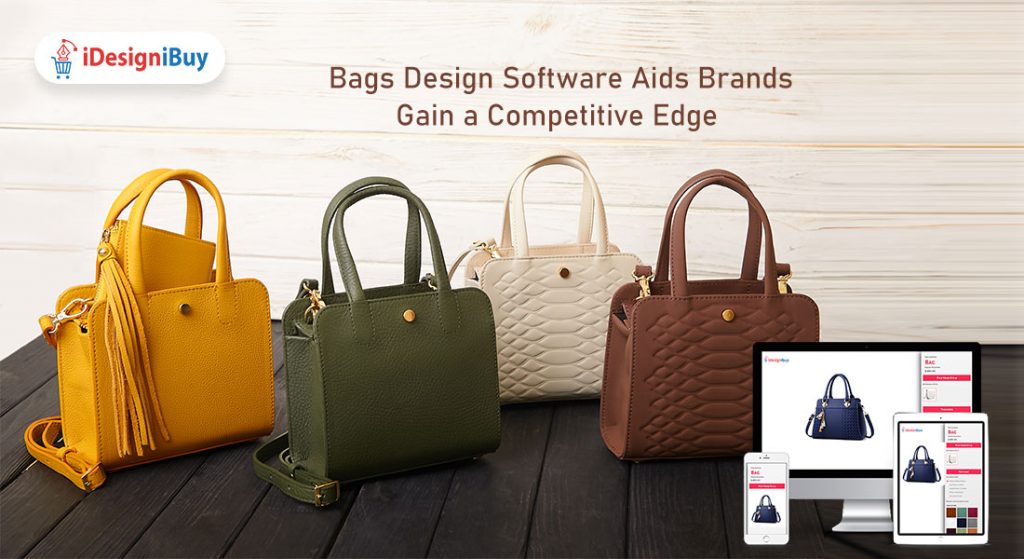
Handbag Design Software Enables Brands to Stay Strong Amid Shifting Demands
Bags have always been integral to people’s looks. They have been relied upon for sales to complement a ready-to-wear for a season or make it better at times. It is simply the lovely, high-profile icing on the cake, adorning store windows and providing catwalk fodder while contributing only a small percentage to the bottom line. Yet, every season, we see all the leading brands displaying a wide range of tempting bags. The marketing heads of these high-end fashion companies spend millions of dollars and tell the smallest of the details with so much enthusiasm. With each season comes introducing the new ‘Icon’ bag, a phrase overused by endless brands to make themselves sellable better in the luxury market. All these marketing strategies explain that no matter how much these bags account for total fashionable products, they are an indispensable part of the fashion industry.
Let us look at the various factors prompting the growth of handbag design software in the fashion market:
The luxury industry has been hit hardest by the pandemic as events curtailed the need for party outfits or sports, and as a result, plummeted the bag demands. However, as the lockdown lifts across various countries, brands like Ralph Lauren and Rebecca Minkoff recognize the potential to make their inventory more flexible and reach new customers. This is particularly significant for brands willing to entice a growing demographic of digitally savvy, sustainability-minded customers. Moreover, the Boston Consulting Group (BCG) survey, in partnership with the Altagamma Foundation, revealed that even during the unprecedented last year, 21 per cent of Gen z and millennials opted for digital products. The primary driver to opt for these products was sustainability and search for value. In Addition, using these tools also enables customers to try various products and could be used to test the waters by brands to study different products and styles and drive returns on low-performing inventory.
However, there is another way to know what customers want. It is customization, a modern solution, that enables consumers to design their bags in ways they always wanted them to be. The bag design software online works in a similar fashion and allow your customers to express themselves freely. It enables brands to expand their horizon, rise above the trend of seasonality and reduce the pain of deciding what stays in the market and whatnot.
Handbags are women’s best friends. They are a perfect example of showing your status, style, and aspirations. Yet, they do so much more than simply fulfilling the promises as mentioned above and roles. Since their inception in the 20th century, they are used for practical purposes, for example, the evolution of backpacks that allowed people to stock their things in them whenever they head out for outings. Likewise, people need bags for various purposes, and buying them for every occasion sometimes seems too much for people. It makes the department more exclusive to the elite class. Brands were thriving by charging these people, but gradually the wave of inclusivity came in. Middle-class and not-so privileged people also wanted to be seen and respected by brands. The problem standing ahead was “affordability”, and people would never be in a position to pay these premium prices. In fact, from a brands’ perspective, losing this class would put them in a bad light. Hence, came in “rental subscription”. A phrase, or services, rather provided by fashion brands to consumers to rent the bags for a day or so, as per their requirement, and then return them.
Leading companies, such as Kering, has signalled interest in the fast-growing rental market with their first investment in upmarket handbag rental service Cocoon. The collaboration between brands allows brands to share each other’s knowledge base and ensure triple-digit growth. Besides, it also helps brands to understand and navigate their consumer insight and digital practices. Many experts believe that the subscript-based model is a feasible and enticing trend in the handbag design software industry. It also extends the product life cycle that resonates very well with the current market circular economy.
The Ball in is Your Court-
Handbags bring a wide range of uses to offer; they have gone beyond style and fashion. They are used for holidays, shopping, workplaces, and many other things. However, with certainty, we can say that they will never go out of style. The handbag pattern making software by iDesigniBuy offers luxury companies another reason to make their bags even more demandable. Its customization and digital features allow your consumers to design their bags and add images minutely, text, embryoid it in the way they like it.

In the last couple of decades, consumers’ interest in a brand’s activity and their commitment to nature and protecting it more importantly. The furniture industry is not far away from this radar, and its stakeholders are excessively looking for measures that can help them reduce the burden on the environment. We have got your back. The furniture customization software works in a similar fashion and enables furniture manufacturers and retailers to streamline their production processes. The customization tool helps your buyers furniture design tools as they like and aids brands to manufacture products as wished by the audience. It is a tool that ensures brands produce goods that are demanded and not manufacture first and then create demands.
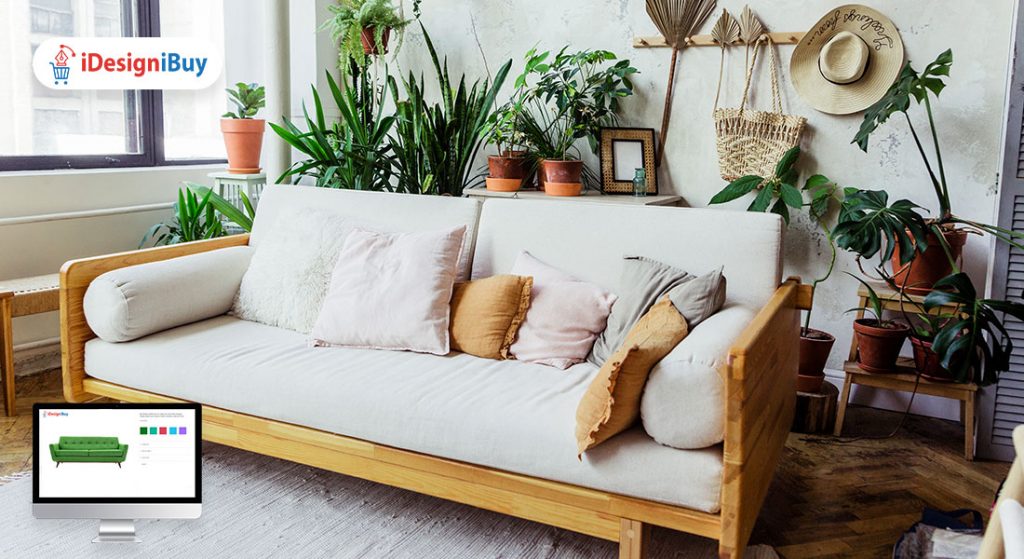
Furniture Design Software Enable Brands to Offer Eco-friendly Products
For a long time, the fashion and luxury market has been criticized for its irresponsible behavior towards the planet. For example, the brands’ furniture is sometimes of so low quality that after the purchase, the product ends up thrown away. According to Environmental Protection Agency, Americans throw out more than 12 million tons of furniture and furnishings each year. Therefore, it is of grave significance for companies to transform their business strategy.
People are increasingly interested in sustainable furniture, and the advanced eco-friendly technology enables brands to meet these new and dynamic needs of customers. These technologies have gradually become the mainstay in our everyday lives. Therefore, many brands are shifting their focus towards a greener environment and sprouting up in response, producing sustainable and eco-friendly furniture for the environmentally-conscious consumer. Eco-friendly brands offer furniture that can be reused, recycled, and the best that don’t use products that cause any harm to nature. Most sustainable furniture companies also focus on reducing the environmental impact of their items, such as using reclaimed materials or non-toxic furniture stains.
Let us look at various pointers that will enable the furniture companies to become more sustainable:
Incorporating recycled and reclaimed material while manufacturing furniture can take your business to the next level. As discussed in the above paragraphs, people are increasingly inclined to buy things that have ecological value and stay with them for more years, if not a lifetime. Using organic or reusable fabrics to manufacture products creates the impression among consumers that you care. Besides, old furniture, homes and other structures often provide the reclaimed items. Brands can use the wood scraps or flawed wood pieces from the factory for their sustainable furniture. Wood is a popular choice for manufacturers because it’s durable, even if it’s been mishandled throughout the years. Reclaimed pine, for example, is a popular finish for the Cristallo table.
Customization is another way for brands to reclaim their sustainable tag, and in recent times, it is emerging as the go-to option for brands. The new business tool enables companies to establish transparency with buyers and display the quality of the product before they are delivered to them. The 3D furniture design works on similar lines and allows companies to offer top-quality material to their audiences and let them design furniture as they like. The tool is better equipped to enable brands to become more eco-friendly as they have to manufacture what has been asked by users. This reduces over-production from the company’s end, and since it is designed as per customer preference, they are less likely to throw it away. As the custom-made solution operates in 3d, consumers will have complete control over what material to be used in the product, thus reducing the chances of wear and tear of furniture.
Since the last year, people have been working from home, and as situations are getting better, they have been asked to resume work from the office. However, people will need time to get accustomed to the new trends; therefore, many organizations feel the need to renovate their houses and make them more friendly where employees feel at home. The DIY serves this in the best possible way. As per Laurie Barrette, cofounder of Montreal-based sustainable home goods company,Dans Le Sac upgrading used furniture and learning new skills to become more self-sufficient will be a revival. Though the supply chains have been down due to the pandemic, the customization tool makes it easier for them to design furniture any time of the year through an ecommerce portal.
Moreover, even at homes, when people have little things to do, renovation keeps them busy, and customization also makes it easier and faster for brands to reevaluate the furniture that we have already sold.
Conclusion-
From the facts mentioned above, it can be inferred that the furniture design tools industry needs to a bit more to become more eco-friendly. Therefore, it would be appropriate to conclude that taking corrective measures and checking mass-production actions will enable furniture brands to get closer to their sustainability goal. Furthermore, the best furniture design software by iDesigniBuy enables brands to establish transparency and embark upon the community service journey.